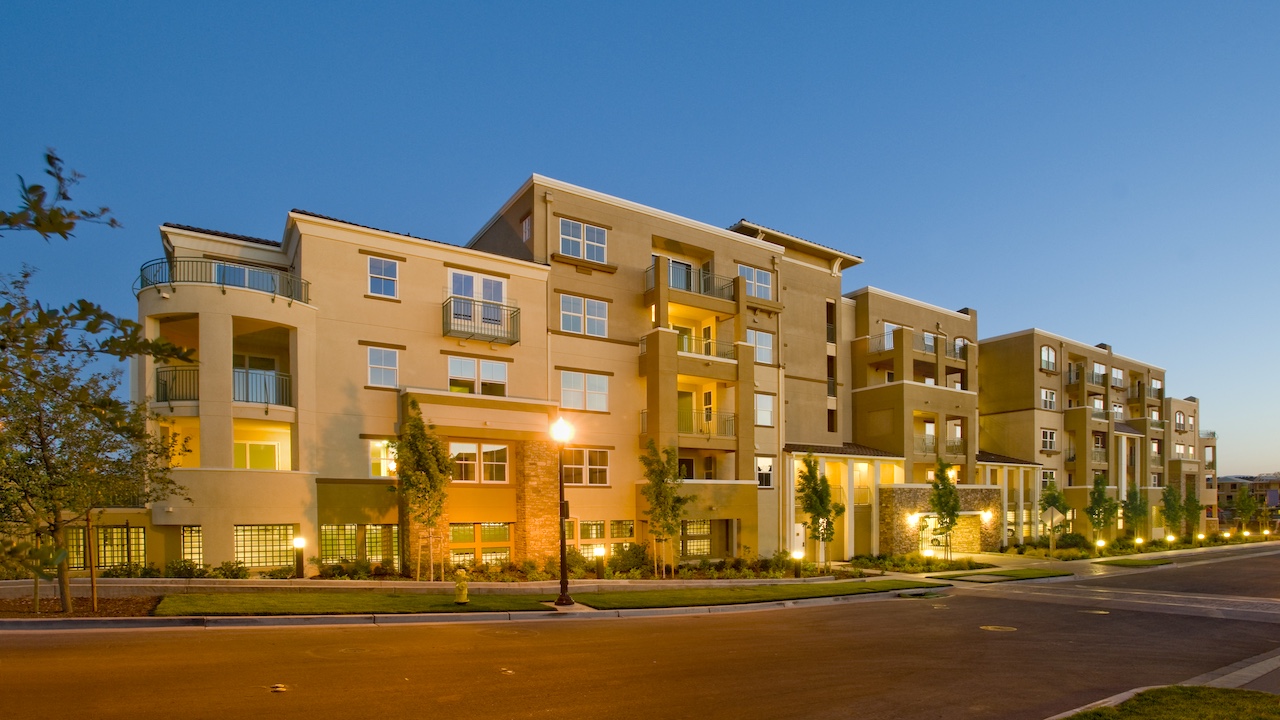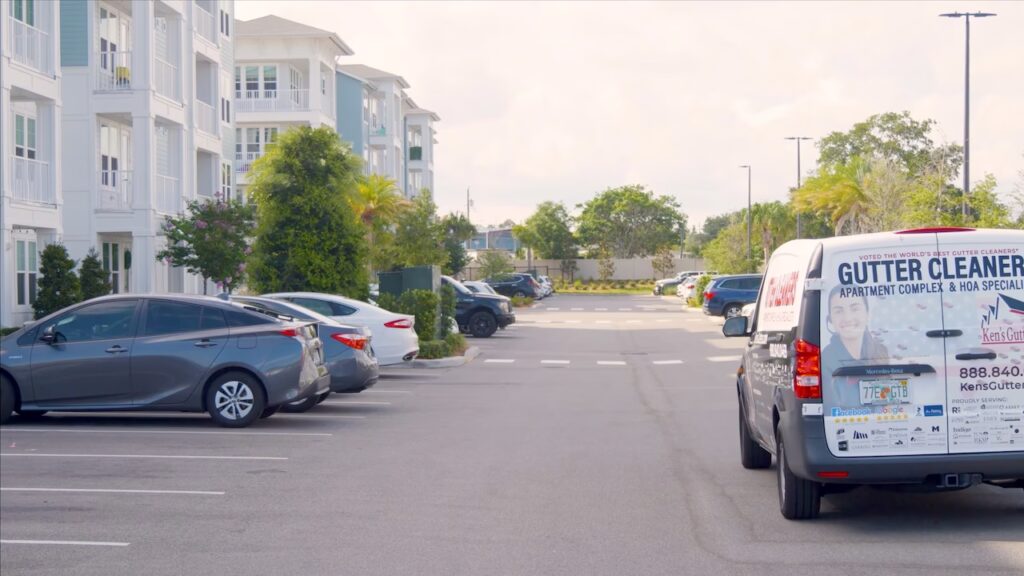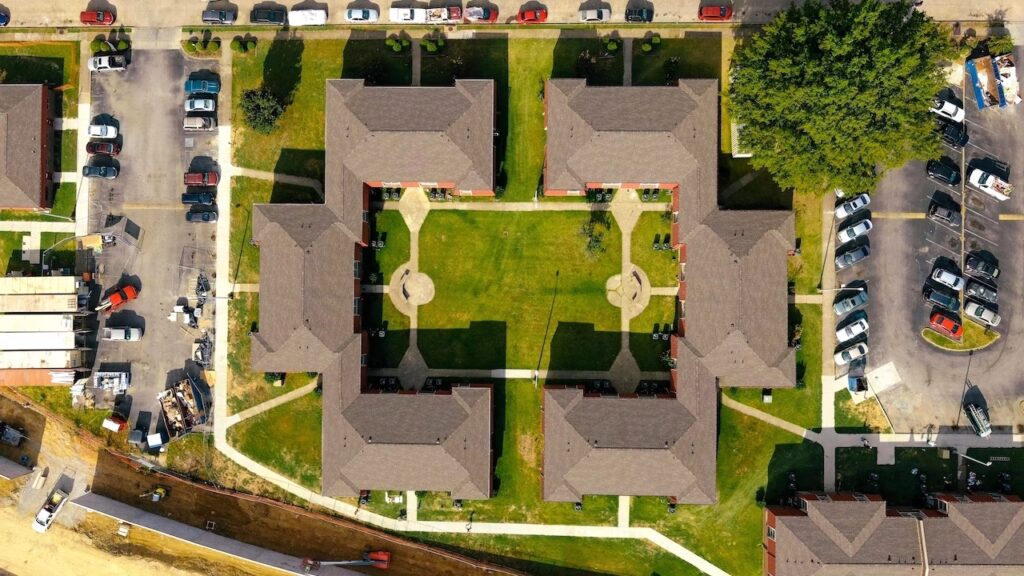For commercial property owners, real estate investors, and HOAs overseeing large-scale residential developments, routine maintenance is more than a best practice—it’s part of protecting your asset and ensuring long-term performance.
One often-overlooked component of this maintenance plan is the gutter system.
Unlike single-family homes, multi-unit buildings such as apartment complexes, condominiums, and community-managed developments face unique challenges due to larger roof surfaces, more complex drainage systems, and higher exposure to environmental debris. Knowing when to schedule a professional gutter cleaning can help avoid costly repairs, water damage, tenant complaints, and code violations.
Below, we explore the most common and critical signs that it’s time to clean your commercial property’s gutters.
1. Water Overflow or Spillage During Rainstorms
One of the most immediate and visible signs of a gutter system in distress is water overflowing the sides during rainfall. This often indicates a blockage caused by leaves, dirt, and other debris. In commercial or multi-building settings, these overflows can erode landscaped areas, damage exterior walls, and lead to water infiltration around the foundation or basement levels.
When this happens repeatedly, it not only affects the physical condition of the property but can also lead to liability concerns if icy patches form in walkways or driveways due to improper drainage in colder climates.
2. Visible Debris, Vegetation, or Staining in Gutters
If you’re able to see plants, grass, or moss growing out of the gutters—either from ground level or via a drone or roof inspection—it’s a clear indicator that organic debris has built up to a problematic level. These blockages can trap moisture, attract pests, and add unnecessary weight to the gutter system, all of which reduce efficiency and increase the chance of damage.
Additionally, dark streaks or stains on the gutter surfaces or adjacent siding can signal long-standing water retention and leakage, both of which suggest it’s time for immediate cleaning and inspection.
3. Sagging Gutters or Pulling Away from Fascia
Overloaded gutters may begin to sag, tilt, or even detach from the fascia boards they’re mounted to. On large buildings, this can be particularly concerning because of the volume of water involved and the potential for sections of the system to fail entirely.
This condition not only compromises the effectiveness of the system but also presents a safety hazard to residents and maintenance staff. Sagging gutters are typically caused by the accumulation of wet debris or standing water, both of which can be avoided with routine cleaning.
4. Water Stains, Mold, or Mildew on Exterior Walls
Unexplained watermarks, peeling paint, or signs of mildew on the exterior surfaces of the building often point to malfunctioning gutters. When water is not properly channeled away from the structure, it can seep down walls and into window frames, leading to decay and costly remediation efforts.
This is especially important for properties with brick facades or wood siding, which are more susceptible to prolonged water damage.
5. Foundation or Landscaping Issues
Poorly functioning gutters can cause water to pool around the base of a building, resulting in soil erosion, cracked foundations, and uneven landscaping. On commercial properties with expansive grounds and significant hardscaping investments, this kind of damage can become not only expensive but also a disruption to tenant life and daily operations.
Regular inspections of the ground area immediately surrounding downspouts can reveal pooling water or soil displacement—both signs that the system is not properly dispersing runoff.
6. Reports from Residents or Maintenance
In many cases, the first alert that something is wrong with the gutters comes from those on-site daily. Tenants may report dripping near entrances, wet spots on ceilings, or moisture in common areas. Likewise, internal maintenance teams may notice that gutters are full, clogged, or draining poorly.
These observations are invaluable and should be treated as early warning signs that immediate attention is needed.
Why Proactive Gutter Maintenance Matters
For commercial property stakeholders, the true cost of neglected gutters isn’t the cleaning itself—it’s the cumulative damage that results from inaction: water intrusion, structural degradation, pest infestations, and even mold development. Each of these can lead to tenant dissatisfaction, increased insurance claims, and significant repair expenses.
That’s why leading property managers partner with commercial gutter specialists who understand the scope and complexity of multi-unit structures. Companies like Ken’s Gutters, America’s largest commercial gutter cleaning provider, offer scalable solutions nationwide.
Whether managing an HOA in Arizona or an apartment complex in Pennsylvania, we provide professional-grade service tailored to large-scale properties.
When in Doubt, Schedule an Inspection
Even if your gutters appear functional from the ground, many issues remain invisible without a professional inspection. A semi-annual cleaning schedule—typically in spring and fall—is a strong baseline, but properties with heavy tree cover or harsher weather might need more frequent attention.
Proactive gutter maintenance is asset protection. By responding to warning signs early and working with trusted commercial service providers, property managers and investors can avoid disruption, safeguard their investment, and uphold the reputation and safety of their property.





